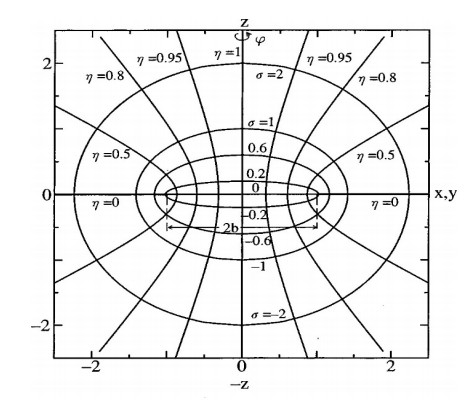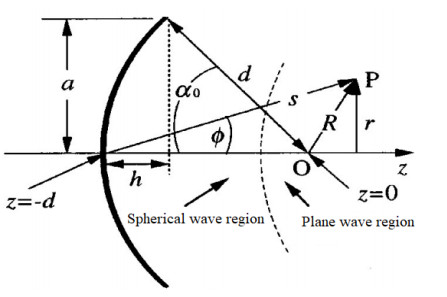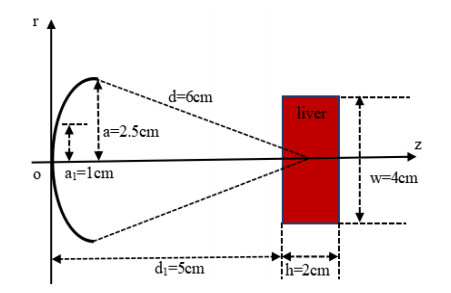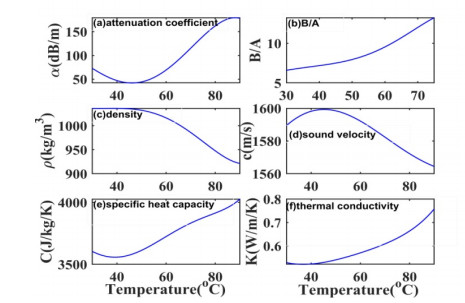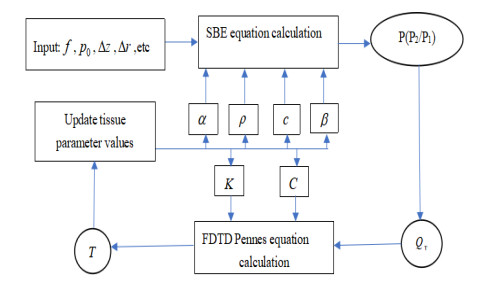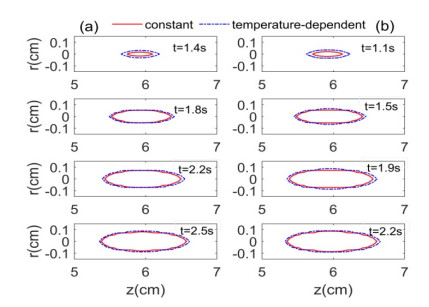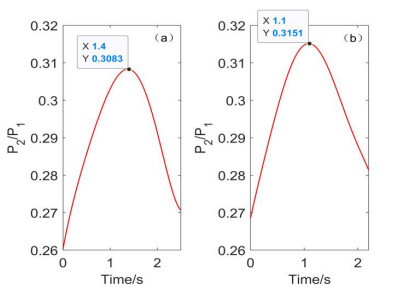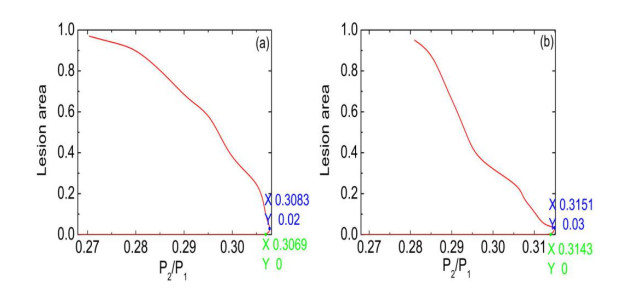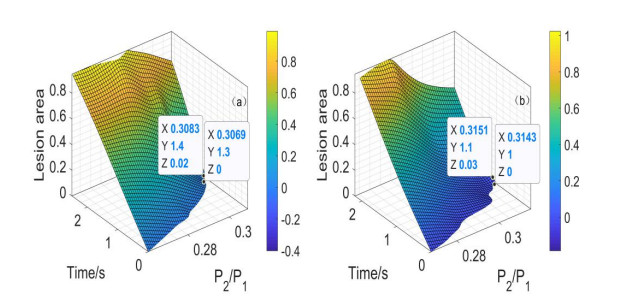1.
Introduction
Quantitative, informative and applicable models have long been proven beneficial to assist law enforcement to curb urban crimes. Following the seminal work (see reference [18]) on the mathematics of agent-based models for residential burglary, many works have been done on mathematical crime modeling and prediction, see e.g. references [1], [3], [7], [9], [12], [13], [14], [15], [16], [18], [19] and [20], and the references cited therein, and in [18].
There are roughly two classes of crime models. One is agent-based aiming to describe the individual activities, and the other is event-based without specifying the individual agents, aiming to predict the patterns of observed events (see e.g. references [15] and [16]). Here we address the first class of models.
In reference [18], "hotspots", clusters of residential burglary well documented in real life, are quantitatively studied for the first time. A discrete lattice grid is imposed, upon which residents are distributed each labeled with its level of attractiveness, and burglary agents walk over sites seeking for targets. Burglary dynamics is coupled with the environment variable based on the repeat and near-repeat victimization and the broken-windows effects. These notions maintain that a previously burgled house and its neighbors are more attractive to potential offenders, as an environment encouraging further illegal activities is more likely to be created by past crimes with visible signs (see the relevant references in references [18], [19] and [20]).
In reference [18] the time steps are set as deterministic and all types of events occur at fixed regular intervals. Random arrivals are incorporated later in references [19] and [20], governed by stochastic clocks generated from Poisson processes. In reference [19], there is one uniform Poisson-clock, and in reference [20] independent Poisson clocks are assigned to each individual agent. To summarize, these agent-based models are referred to as DTS (deterministic-timestep) Model (see reference [18]), SSRB (stochastic-statistical residential burglary) Model (see reference [20]), and SSRB-IPC (independent Poisson-clock) Model (see reference [20]), respectively. Continuum analogues parallel to these models are derived as a mean-field limit in reference [18] or a potential hydrodynamic limit in references [19] and [20], both of which lead to the same coupled deterministic reaction-diffusion equation system.
The models mentioned above serve as the first-generation agent-based criminal behavior models, whose prototype will be referred to as First-Generation Model. They are stochastic models with a continuum limit that can be viewed as a statistical average. The continuum limit is simpler to analyze and simulate by computer, and when total population is sufficiently large, the discrete and continuum simulations exhibit similar hotspot dynamics. However, as agent number decreases, the discrete simulations exhibit more transient hotspot regimes, generating the finite size effects. Quantitative analysis in references [19] and [20] show that these effects arise due to stochasticity of the system, and criminals act randomly in reality. It is called for that we combine the strengths of First-Generation Model and its continuum limit to build a second-generation criminal behavior model.
In this work, we construct a stochastic multi-scale criminal behavior model with hybrid dynamics, where agent actions and environment variables are set on different spatio-temporal scales. This model will be referred to as M-IPC (Multiscale-Independent-Poisson-Clock) Model. In contrast, the clocks in First-Generation Model (deterministic and random) all have rates at the same order of magnitude. Here we assume instead that the environment variables evolve as the fast component continuously in time and in space, while criminal agents move along discrete lattice grids following independent Poisson clocks on slow time scales. The evolution of the environment variables can be sociologically interpreted as the spreading of information, which we assume to be in a continuous mode. That is, the rate of change of information at each spatial point is "fast" while the amount of change is infinitesimal during each infinitesimally short time period. And we adopt suitable temporal-spatial scaling to make the change of information at each spatial point over a time period to have the same order of magnitude. The result is a partial differential equation whose parameter depends upon agent distributions, which switches values according to the Poisson jumps governing agent activities. The simulation cost of agent-based M-IPC Model is vastly reduced compared to the SSRB-IPC model. Moreover, transient hotspot regimes as well as stationary hotspot regimes arise in the simulations. And our M-IPC Model with the multiscale setup can also be applied to types of crimes other than residential burglary, e.g. drug smugglings.
The separation of scales not only facilitates simulations, but also brings in the mathematical framework of piecewise deterministic Markov processes (PDMP), while First-Generation Model evolves according to (discrete or continuous time) Markov processes. A martingale approach similar to that developed in references [19] and [20] is applicable. The martingale formulation can be used to represent the model as the sum of a deterministic and a stochastic part, which will be useful for further study of hotspot dynamics. PDMP, also referred to as the iterated random functions (see e.g. reference [6]), hybrid stochastic processes, or jumping Markov processes (see e.g. reference [11]), has been extensively studied (see e.g. references [2], [5], [8], [10] and [17], and the references cited therein). Also PDMP has been widely applied in physics, chemistry, biology and other fields in natural science (see e.g. references [2], [8] and [17], and the references cited therein). However, as far as we know, this is the first time that PDMP is applied to crime modeling, and our methodology can be useful for quantitative study in social and behavioral science in general.
The paper is organized as follows. We first introduce the set-up of agent-based M-IPC Model (Section 2), where the slow and the fast components are described in Sections 2.2 and 2.3, respectively. The computer simulations are shown in Section 3, where both transient and stationary hotspot regimes are displayed. We review the general characterizations of PDMP and apply them to our model (Section 4.1). Finally the martingale representation of our model is established in Section 4.2.
2.
Agent-based M-IPC model
2.1. Overview and notations
We start with a domain M⊂R2 representing the vicinity of an urban area. Without loss of generality, we assume that the domain M=[0,1]×[0,1] with periodic boundary conditions1. A fixed grid is imposed on M with grid length 1/L, for a constant L∈N. We denote the central points of all the grid cube by the upper case letters, e.g. K=(K1,K2), K1=1/L,2/L,⋅⋅⋅,1, and K2=1/L,2/L,⋅⋅⋅,1, and the collection of all these central points as D. Let DK be the grid cube with K as its center, and we call such a cube a 'district'. They can represent in real life
1With minor changes we can also consider e.g. the Dirichlet boundary conditions, which is more realistic.
(ⅰ) Natural districts corresponding to those in an urban setting. For example, in Los Angeles, we can consider the natural counties as what those districts correspond to.
(ⅱ) Artificial districts to facilitate the collecting of data etc.
Attached to each K∈D is a quantity NK(t) representing the number of agents in district DK at time t. For each x∈M, we denote the attractiveness at time t to be A(x,t), which quantifies the criminal's beliefs about the vulnerability and value of the location x. We define ˉAK as the accumulated attractiveness field over a district DK as
We also assume that A(x,t) consists of a dynamic term and a static background term
where A0(x) is not necessarily uniform over the lattice grids. And the initial data are given to be
2.2. Agent activities based on independent Poisson-clocks
Following SSRB-IPC Model in reference [20], three types of independent Poisson clocks govern the time increments of arrivals of events, and all the Poisson clocks are independent with each other. Unlike the setup in First-Generation Model (see references [18], [19] and [20]), here we assume that the attractiveness evolves over M according to a diffusive-like equation, whose parameter depends upon previous criminal events in the corresponding district.
(Ⅰ) Committing crimes.
A Type (Ⅰ) Poisson clock is assigned to each agent to govern his action of committing crimes like burgling. Suppose that a Type (Ⅰ) clock of an agent in district DK advances at time t−. At time t, the agent will commit crimes like burgling within a small neighborhood of x, x∈DK, with probability Ax(t)ˉAK(t)dx. That is, the probability density is Ax(t)ˉAK(t). And the agent will be immediately removed from the system, representing the criminal fleeing e.g. with his trophy after burgling. Type (Ⅰ) Poisson clocks advance according to independent Poisson processes with rate L2c1ˉAK(t), DK being the current district that the criminal agent is in. Here c1 is an absolute constant.
For agent activity Type (Ⅰ) described as above, there is an alternative description. Suppose that each criminal has a Poisson clock with rate L2c1ˉAK(t), and once this clock rings, he will commit a crime like burgling at a place x within that district, and there is no need to specify x.
(Ⅱ) Moving along districts.
A Type (Ⅱ) Poisson clock is assigned to each agent to govern his movement. Suppose that a Type (Ⅱ) clock of an agent advances at time t−. At time t, the agent will jump from district K, K∈D to one of the four neighboring districts, say J, J∈D, with a probability, qK→J(t), which is defined by the ratio of the averaged attractiveness of district J over the combined averaged attractiveness of the neighboring sites of district K:
where TK(t):=∑K′K′∼KˉAK′(t), K′∼K indicating all of the neighboring sites of K. Type (Ⅱ) Poisson clocks advance according to independent Poisson processes with rate c2L2, where c2 is an absolute constant. On average, the time increment δt for Type (Ⅱ) clocks is the inverse of the rate of the Poisson clock:
(Ⅲ) Replacement.
A Type (Ⅲ) Poisson clock is assigned to each district DK to govern replacement of criminals. Suppose that the Type (Ⅲ) clock attached to a district DK advances at time t−. At time t, a new agent will be placed within district DK. Type (Ⅲ) Poisson clocks advance according to independent Poisson processes with rate Γ, an absolute constant indicating the growth rate of criminal population.
Remark 1. The Poisson clock is particularly suitable to model random arrivals and has been used to build Poisson processes which are widely applied in biology, economics, and physics (for references see those cited in references [19] and [20]).
2.3. Continuous evolution of the attractiveness field
Following the setup of First-Generation Model (see references [18], [19] and [20]), we assume that the attractiveness field react to the agent activities described above according to the repeat and near-repeat victimization, and the broken-windows effects (see the related references in references [7], [18], [19] and [20]).
To model the repeat victimization and broken windows effects, we assume that the attractiveness increases continuously in time, with an increasing rate depending upon the average number of criminal events at the current location. However, this increase has a finite lifetime and decays at a certain speed. And we model the near-repeat victimization effect by letting the attractiveness to spread diffusively in space. Summing up, between the Poisson jumps of the criminal activities, the following partial different equation describes the spatio-temporal evolution of B(x,t):
Here θ, ω, and η are constants measuring strength of the repeat victimization effect, the speed of the decay, and the significance of neighborhood effects, respectively, and Δ is the classical spatial Laplace operator.
For x∈M, we define the following piecewise constant function N(x) to be
where 1K(x) denotes the indicator function on DK. Then (6) implies
We note that to completely specify the coupled dynamics of criminal activities and attractiveness field evolution, it is sufficient to keep track of the total number of criminals in each district. To conclude, the scales of the criminal activity and the evolution of the attractiveness field separate automatically.
3.
Computer simulations
We simulate M-IPC Model described above under various combinations of the parameters, in order to give insight into the behavior regime of the model, and compare it with the DTS, SSRB, and SSRB-IPC Models. The resulting attractiveness plots are displayed in Figs. 1 and 2.
3.1. Hotspot dynamics regimes
Behavioral regimes similar to those in references [18], [19] and [20] for the attractiveness field A(x,t) are observed:
Case 1 Stationary hotspots. In this regime, the system tends towards an almost steady state in which stationary spots of high attractiveness are found, surrounded by areas of extremely low attractiveness.
Case 2 Dynamic hotspots. In this regime, loclized spots of increased attractiveness form and are transient. These spots remain for varying lengths of time, and may appear and disappear at seemingly random locations, and move about in space and deform over time. There are two sub categories, depending on whether the hotspots interact between each other or not.
Case 2.1. Independent hotspots. Hotspots each change in size and shape but any two hotspots rarely have interactions.
Case 2.2. Interactive hotspots. Hotspots repeatedly and constantly merge with each other and split. This regime reveals the intrinsic randomness of the model.
3.2. Simulation output
All the simulations were run with L=20, A0=1/30, and A(x,0)=0.3. The initial total number of criminal agents is set as 640, and agents are randomly uniformly distributed over M. The initial value of the dynamic attractiveness serves as a midpoint for all the simulations, and is shaded in green. Other values of attractiveness follow the rainbow spectrum from violet, corresponding to A0=1/30, to red, corresponding to 2B(x,0).
In Fig. 1 (a), we set c1=7.5, c2=0.135, Γ=6, θ=0.04, ω=1.5, and η=0.0035; in Fig. 1(b), c1=14.1176, c2=0.1071, Γ=6, θ=0.1417, ω=5, and η=0.0078; in Fig. 1(c), c1=34, c2=0.0253, Γ=8, θ=0.0647, ω=6, and η=0.00703; in Fig. 1(d), c1=1.6667, c2=0.0005, Γ=0.933, θ=0.0146, ω=0.666, and η=0.333. In these figures, for each parameter combination, we display the plots drawn at time 4.5, 9.5, and 14.5, with the units as "month".
The parameter regimes are robust for all three cases of hotspot dynamics mentioned above, and the same hotspot dynamics is also observed over other random paths with the same parameters used to create the plots in Fig. 1. In Fig. 2, distinct-stochastic-basis realizations for Fig. 1(c) are displayed.
Remark 2. The numerical scheme for (6) is similar to that in reference [18]. We use a semi-implicit scheme in which gm represents a quantity g at the mth time step:
Here δt represents the time step. And we use a Spectral method to discretize the spacial Laplace operator.
4.
Martingale representation
The coupled dynamics of (N(x,t),A(x,t)) can be reinterpreted as a piecewise deterministic Markov process (PDMP) in a Hilbert valued space. A martingale approach is applicable. The martingale formulation of a PDMP characterizes the process as sum of an integral part involving the infinitesimal mean and a martingale part.
4.1. PDMP and its Martingale representation
First introduced as in reference [4], a PDMP, roughly speaking, is a dynamic system occasionally interrupted by a pure jump process whose states then switch according to certain probability distributions (see e.g. references [2], [5], [8] and [10]).
We start with a standard stochastic basis (Ω,F,P,Ft), and let E be a metric space. The pure jump process with state space E can be characterized by the pair (Λ,Q) where Λ is the transition rate which is a map from E to R+, and Q is a measure Q:ˉE×B(E)→[0,1]. Here B(E) is the Borel σ-field defined on E, such that three conditions hold: (a) for each E∈B(E), u→Q(u,E) is measurable, (b) for each u∈E, E→Q(u,E) is a probability measure, and (c) Q(u,{u})=0. If U(t) is a PDMP whose trajectory is on a metric space E, then in between the random interruptions coming from the pure jump process, U(t) can be viewed as a deterministic flow generated by an operator L where
Alternatively, starting from U(0)=U0, the process U(t) evolves deterministically according to (10) until the first 'switching time' τ1 with an exponential distribution defined as follows
Then U(t) switches value at t=τ1(ω) according to the transition distribution Q, and the process starts afresh from its new state.
The infinitesimal generator of the stochastic process can be derived following e.g. references [4], [5], [8], [10] and [17] as
for every f∈D(T), where we denote by Qf the function ∫εf(v)Q(u;dv). And the martingale representation of the PDMP can be written as
where M(t) is a martingale with respect to the filtration generated by U(t).
4.2. Martingale representation for M-IPC Model
For every t, we define N(t):={N(x,t):x∈M} and B(t):={B(x,t):x∈M}. In a similar way we can define the stochastic process A(t) associated with A(x,t). Let ⟨⋅,⋅⟩ denote the L2 inner product over M, and ϕ={ϕ(x):x∈M} be an arbitrary stationary scalar field defined on M. We have
where
We define
Then ⟨(N(t),B(t)),ϕ⟩ is a PDMP with values in E=R×R. A martingale approach is applicable and a martingale formulation can be derived as follows:
Theorem 4.1. Starting with the initial data (N0(x),A0(x)), before the possible blow-up time, ⟨(N(t),B(t)),ϕ⟩ can be written as
where Mi(⟨(N(t),B(t)),ϕ⟩), i=1, 2, are Martingales with respect to the filtration generated by (N(t),B(t)) that start at t=0 as zeros, Λ(⟨(N(t),B(t)),ϕ⟩) is the total Poisson rate, (Q1−I1)⟨(N(t),B(t)),ϕ⟩ is the first component of the vector (Q−I)⟨(N(t),B(t)),ϕ⟩, for Q the transition distribution, and I the identical operator, and L2(⟨(N(t),B(t)),ϕ⟩) is the second component of L(⟨(N(t),B(t)),ϕ⟩), the generator of the deterministic flow of the PDMP, and
In other words, the deterministic flow of the PDMP driven by L(⟨(N(t),B(t)),ϕ⟩) gets interrupted and switches states based on the jump process characterized by the jump intensity Λ(N(t),B(t)) and transition distribution Q.
Proof of Theorem 4.1. Substituting f with the identity operator in (12), we obtain
Thus we have for the vector-valued stochastic process ⟨(N(t),B(t)),ϕ⟩
where Li(⟨(N(t),B(t)),ϕ⟩), and (Qi−Ii)⟨(N(t),B(t)),ϕ⟩, i=1,2, are the components of L(⟨(N(t),B(t)),ϕ⟩), and of (Q−I)⟨(N(t),B(t)),ϕ⟩, respectively.
In between advancements of Poisson clocks, the value of N(t) stays as a constant, and so does ⟨N(t),ϕ⟩. And we have
Similarly as B(t) follows a deterministic continuous flow, we have
which together with (6) implies (19).
Since all the Poisson clocks in the system are independent, Λ(N(t),B(t)) equals to the sum of the rates. This includes the rates of Type (Ⅰ), Type (Ⅱ), and Type (Ⅲ) clocks, which implies (17).
Suppose that a Poisson clock advances at time t−. Then ⟨N(t−),ϕ⟩ changes value according to the probabilities specified as in Section 2.2, depending on the type of Poisson clock. Since all the events involved are independent, from (4) we have
This together with (17) implies (18). From (6), we infer that the flow ⟨B(t),ϕ⟩ is continuous in time at time t−. Thus we have
which implies that
With every term on the right-hand-side of (21) derived, from (12), (13), (20), and (21) we obtain (16).
The proof of Theorem 4.1 is completed.
Remark 3. Unlike First-Generation Model, the finite size effects are circumvented here. Nevertheless, our model still generates interesting pattern formation of hotspot dynamics. Pattern formation in complex system has been studied extensively recently in natural and social sciences (see e.g. the references cited in the introduction of [20]). And the mathematical framework that we develop here based on PDMP theory and martingale formulation can be useful for quantitative study in this area, which has been lacking so far.
5.
Conclusion
Ever since the pioneering agent-based residential burglary model of criminal behavior reference [18] is published, many works have been done aiming to study and improve the original model e.g. by incorporating random arrivals as in references [19] and [20]. In these models, residents are assumed to be located on the grids of a lattice field. Two components, the agent activities over the lattice and the level of attractiveness of target sites, are assumed to interact with each other on the same spatio-temporal scale. The continuum limit of First-Generation Model turns out to be reaction-advection-diffusion equations. However in the continuum simulations, transient hotspot regime is missing, which is not realistic as transient hotspots are well-document in empirical observations. A new generation of agent-based models of criminal behavior are needed.
In this work, we propose a multiscale model, where the attractiveness evolves continuously based on a diffusive partial different equation, whose parameter changes values whenever a Poisson clock associated with an agent action advances. Compared with First-Generation Model with two slow components, our model has a fast component and easier to simulate and analyze. Moreover, the stochastic nature of the model is successfully maintained and transient hotspot regimes with intrinsic randomness are picked up in the simulations as desired.
Furthermore, our multi-scale hybrid model can be characterized as a PDMP, which is applied in such a circumstance for the first time to the best of our knowledge. A martingale formula is derived, which consists of the deterministic component corresponding to the diffusive partial differential equation of attractiveness evolution, and the stochastic component corresponding to the Poisson arrivals. Results presented here will be transformative for both elements of application and analysis of agent-based models for criminal behavior.
Acknowledgments
We would like to thank the helpful discussions with Professors A. Debussche, A. L. Bertozzi, M. B. Short, T. Liggett, C. Mueller, J. Quastel, Da Kuang, Yifan Chen, Fangbo Zhang, Yatin Chow, Hangjie Ji, Yuanzhen Shao, and Kenneth Van. Yuan Zhang has been partially supported by Beijing Academy of Artificial Intelligence (BAAI).










 DownLoad:
DownLoad:


